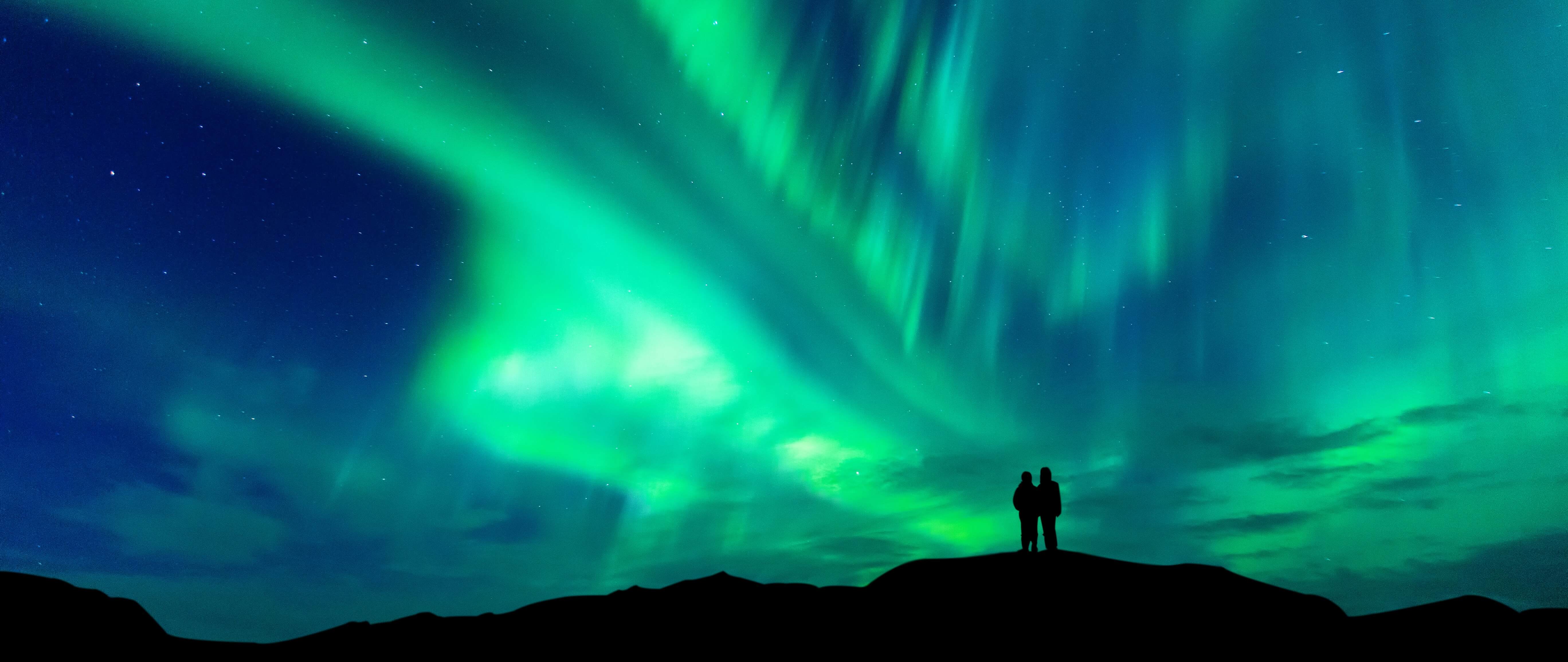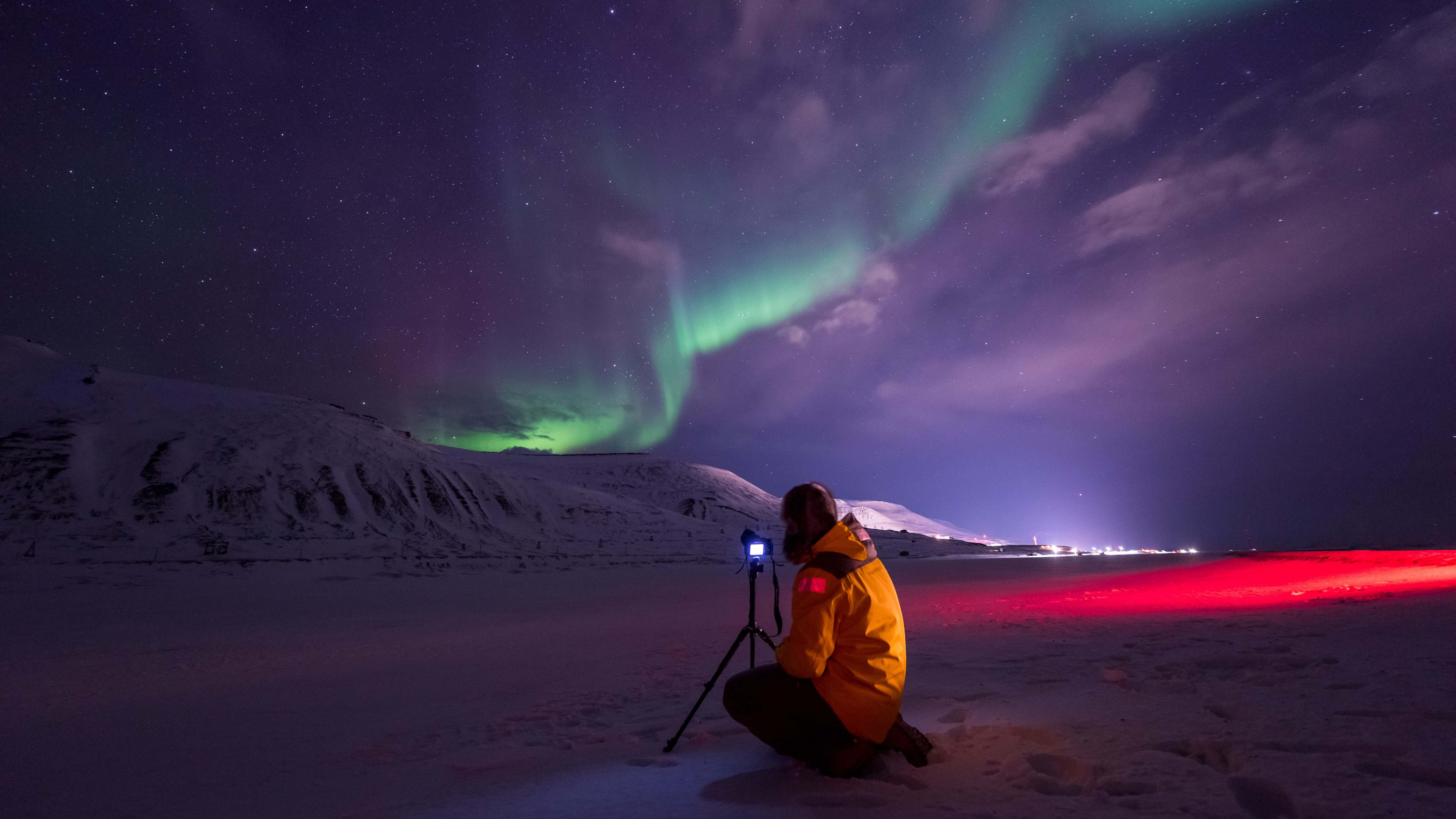
Travel Guide Scandinavia: Tips on Taking Pictures of the Northern Lights
Polar lights, northern lights, aurora borealis are one of nature's most impressive spectacles, where lights full of beautiful colours seem to dance in the night sky. Lots of globetrotters and amateur photographers have this wonderful natural spectacle on their wish list. However, what's the best way to capture this fascinating display of lights? Here are our best tips for photographing the northern lights.
The Right Time and Place
If you want to get this stunning phenomenon on camera, you have to be in the right place at the right time. The closer you are to the Earth's magnetic poles, the more likely you are to get lucky and get the snapshot of a lifetime. You have the best chance of seeing the northern lights in the so-called auroral oval which is an oval ring around the Earth's magnetic poles. In Europe, the Scandinavian countries are an ideal spot for this. The further north you go, the better your chances are of seeing them. It is up to you whether you choose Norway, Sweden, Finland, Iceland or Greenland. Iceland and the Lofoten Islands in Norway are particularly popular hotspots to go see the northern lights in Europe.
Guided tours to go see the northern lights are available for these locations, where you can also meet like-minded people. However, if you are looking for a quiet and idyllic experience, you can also look for them on your own, preferably by car. Fun fact: did you know that you can also see the northern lights in the north of Scotland and in the very south of Australia, New Zealand and Argentina?

However, you should take note that anyone hoping to photograph the northern lights in summer will certainly be disappointed. There is another fascinating astronomical event in the far north at this time of year: the midnight sun. Although theoretically the northern lights also exist in summer, they are simply not visible because it doesn't get dark at all at this time of year. Therefore, the best time to photograph the northern lights is from the beginning of September to the end of March. You can take particularly beautiful photos in winter, as snow provides the perfect backdrop for this magical show of lights in shades of green, purple and blue.
The Perfect Set-Up for Photographing the Northern Lights
For the northern lights to really stand out, the night sky should be as dark as possible. A bright moon or artificial light will distract from the beauty of the lights. Therefore, make sure you are as far away as possible from urban areas due to light pollution. Ideally, you should try and see the lights on a cloudless night. However, the question is where can you find the perfect spot to get the perfect snapshot? There are various apps that give you a forecast on where the northern lights will be visible and can help you find the perfect location.
Technical Tips for Photographing the Northern Lights
So, you’ve found a great spot with a cloudless sky, the moon isn't too bright and there are no bright street lights? Then you're ready to go! Here are a few technical tips that you should bear in mind when photographing the northern lights:
6 Tips for Impressive Photos of the Northern Lights
1. Manual Settings:
If you want to take impressive photos of this spectacle of nature, there is no way around getting to know the manual settings on your camera. This means, you will absolutely need a camera that you can also set manually. It's best to familiarise yourself with all the settings before your trip. This will ensure that you will be able to choose the right settings when the big moment arrives.
2. Shutter Speed:
Finding the correct shutter speed setting is one of the biggest challenges when photographing the northern lights. After all, you won’t know how bright the lights or how fast the lights will be moving ahead of time. When the big moment arrives and the lights become visible in the sky, you need to be quick. The brighter and faster moving the lights are, the faster your shutter speed should be. For particularly bright and fast-moving northern lights, 5 to 10 seconds is usually enough. If the lights are moving slowly, a shutter speed of 12 to 20 seconds is recommended. If the auroras are only dimly lit, we recommend a shutter speed of 20 or 25 seconds. It is particularly important to ensure that your camera remains perfectly still when photographing with such a slow shutter speed. This means that you will definitely need a tripod to keep your camera steady. In addition, you mustn’t take photos with a flash and should switch off the image stabiliser on your camera or camera lens.
3. Focus:
The focus on your camera must also be set manually if you want to capture this show of lights in the night sky. Many camera lenses have an ‘infinity’ setting, which has the following symbol: ∞. This is a good place to start and often works very well. If necessary, you can still finetune the focus manually and set it to just before ‘infinity’.
4. Wide-angle Lens:
To capture as much of the beautiful Nordic landscape and the colourful spectacle in the night sky as possible, a wide-angle lens is recommended. A camera lens that allows a fast exposure of at least f4 - or even better f2.8 - is ideal here. The aperture should be as wide open as possible.
5. Image Composition:
You can capture particularly beautiful photos of the northern lights if you think about the composition beforehand. The fact is that no matter how impressive the colourful lights look in the night sky, your pictures will be infinitely more interesting if you place an exciting subject in the foreground. For example, this could be a lake in which the lights are reflected, an old building or a snow-covered tree. Let your creativity run wild and experiment with the location you have chosen.
6. Additional Equipment:
Imagine you're watching the spectacle of a lifetime up in the night sky. You are taking one photo after another and suddenly your camera display says ‘memory full’ or ‘change battery’. You should definitely be prepared for a situation like this. So make sure you have enough spare batteries and memory cards with you so that you don't run the risk of missing the best moments. What's also very practical is that you can operate the camera without touching it by using a remote shutter release. This prevents camera shake caused by pressing the shutter release. You should also make sure that you wear appropriate clothing. It can get bitterly cold in the northern aurora hotspots, especially in the winter. Therefore, you should be prepared for sub-zero temperatures in the double-digit range and make sure you wear warm clothing and footwear. A particularly practical accessory are photography gloves that either have a cut-out on the thumb and index finger or are coated with a material that is suitable for touchscreens. Also, don’t forget to take a thermos flask with a hot drink of your choice. This makes waiting to see this phenomenon in the night sky a lot easier, even in icy temperatures.

What really matters...
With all the technical things you need to consider, there's one thing you shouldn't forget: lean back and marvel at the spectacle in the night sky with your own eyes. It would be a shame if you only saw this incredible natural spectacle through the lens of your camera. It is also great to take photos of moments behind the camera, even if it's just with your smartphone because your camera is already in a fixed position. These little memories of the people you travelled with are often the best part of the whole trip. In our photo books, you can capture these wonderful experiences and look at them again and again.
What's the best way to showcase your perfect northern lights photo so that you can always remember this special moment? How about a photo poster, a photo canvas or a wall display for your living room? With one of these, you'll be reminded of your adventure to the far north every day and you can think about that special moment. We hope you have lots of fun taking and designing photos!
